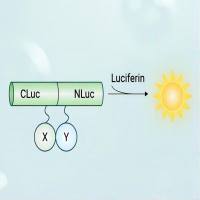Studying the Structure of Large Viruses With Multiresolution Imaging
互联网
449
Multiresolution imaging is an extremely useful technique for understanding in detail the struc ture of large DNA viruses that do not yield to the requirements of protein crystallography. The methodology consists in fitting the atomic structures of capsid components, independently solved, to medium-resolution, 3D maps of the complete virion, obtained by cryoelectron microscopy and image processing. On combining the two kinds of imaging data, one must take into account their intrinsic differences, as they have different resolution, suffer from different imaging artifacts, and are at different scales. These efforts are rewarded by “quasi-atomic” resoluti on models that provide valuable information about protein-protein interactions in the capsid. Difference maps calculated by subtracting the quasi-atomic model from the cryoelectron microscopy map reveal the molecular envelope of those capsid components whose atomic structure is unknown. A better understanding of the complex interactions involved in capsid assembly, stabilization, and disassembly is thus achieved.









